Together Again

Brief Synopsis
Cast & Crew
Charles Vidor
Irene Dunne
Charles Boyer
Charles Coburn
Mona Freeman
Jerome Courtland
Film Details
Technical Specs

Synopsis
Anne Crandall, the widow of the mayor of Brookhaven, Vermont, assumes her husband's public office following his death. Five years later, Anne's devotion to her civic duty at the cost of her personal life concerns her father-in-law, Jonathan Crandall, Sr. Consequently, when a bolt of lightning beheads the late mayor's statue during a storm one night, Jonathan declares that the bolt was a sign from his son, directing Anne to begin living again. At the urging of her stepdaughter Diana, Anne travels to New York to commission sculptor George Corday to fashion a new statue of her late husband. After buying a frivolous hat, Anne goes to the sculptor's studio and finds him napping. She is about to tiptoe out when a clap of thunder awakens Corday. Incredulous that Anne's glamorous appearance conceals the soul of a small-town mayor, Corday becomes intrigued and questions her about her relationship with her late husband. After eliciting the fact that Anne was married to a much older man, Corday bets a dinner that he can guess her weight within two pounds. When Anne adjusts her weight so that Corday wins the bet, Corday takes her to Leonardo's restaurant, where strip-tease artist Gloria La Verne is performing. Over dinner, Corday's observations about her married life make Anne uncomfortable, and when he accepts her commission, she becomes flustered and spills food on her dress. Anne hurries to the ladies' room to dry her dress and is met by the attendant, who insists upon ironing the garment. After Anne removes her dress, the police raid the restaurant, and the stripper escapes through a window in the ladies' room, grabbing Anne's dress on the way out. The police follow, and when they see Anne, clad only in a slip and a hat similiar to that of the stripper, they assume that she is the ecdysiast and arrest her. As newspaper photographers crowd around to snap her picture, Anne covers her face and identifies herself as "P. Borat Sosa," the name she saw on a jar in Corday's studio. The next day, Anne, chagrined, returns home and claims that Corday is too busy to take the job. Sensing that something is amiss, Jonathan questions Anne about her whereabouts the previous night, and she admits to being jailed for indecent exposure. When Diana becomes distraught over Corday's refusal, Anne tries to console her by describing the sculptor as an unappealing old man with a long beard. Soon after, Corday appears at the Crandalls' door, enchanting Diana and intriguing Jonathan, who invites him to stay in the family's carriage house. Later that evening, Anne begs Corday to keep her arrest secret, and he agrees on condition that she allow him one week to work on the statue. As the week progresses, Diana, smitten by Corday, puts on sophisticated airs and begins to speak French, while Anne adopts a more youthful hair style and pays more attention to her appearance. While at the stonecutter's one day, Anne and Corday are trapped by a rainstorm. Seeking shelter under a statue of Cupid, Corday confesses his love and is about to kiss Anne when Diana drives up in her car to take them home. Later, at Diana's high school piano recital, Corday confides his love for Anne to Jonathan, who cautions him that Anne promised Diana that she would never remarry. Following Jonathan's advice to discuss the issue of marriage with Diana, Corday escorts the girl home, but when he begins to speak of love and marriage, Diana thinks that he is proposing to her. After Diana announces her engagement to Corday, her boyfriend, Gilbert Parker, turns to Anne for help. When Gilbert mistakes Anne's concern for love, Anne feigns infatuation for Gilbert, hoping to bring Diana to her senses. Meanwhile, Jonathan, determined to force Anne out of public office and into Corday's arms, gets drunk and tells newspaper publisher Morton Buchman, Anne's opponent in the mayoral election, the story of her arrest. Buchman publishes the story, and when Diana, who has realized the folly of her engagement, reads the expose and learns that Corday was involved, she demands that he redeem Anne's honor by marrying her. Jonathan's plot backfires, however, when the townsfolk give Anne a vote of confidence and insist that she remain mayor. As Anne marches off to unveil the now finished statue and rededicate herself to the town, Corday returns to New York. One rainy night, Anne starts to cry as Jonathan lectures her about giving up Corday and her chance at happiness. When a lightning bolt strikes the statue and beheads it again, the superstitious citizens take it as a sign and ask Anne to resign. Elated, Anne eagerly consents. When Jesse, Anne's housekeeper, informs her that Corday deliberately fixed the statue's head so that it would fall off, Anne hurries to New York. Arriving in a rainstorm, Anne approaches the door to Corday's studio, but then loses her courage and decides to leave. As she turns to go, a lightning bolt sends her scurrying into the studio.

Director

Charles Vidor
Cast
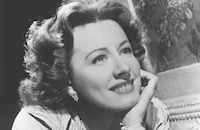
Irene Dunne

Charles Boyer

Charles Coburn

Mona Freeman

Jerome Courtland
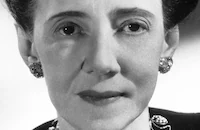
Elizabeth Patterson

Charles Dingle
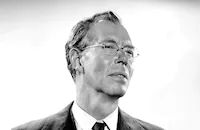
Walter Baldwin

Fern Emmett

Frank Puglia

Janis Carter

Adele Jergens
Edwin Mills
Virginia Sale
Pat Parrish
Rafael Storm
Jimmy Lloyd

Alfalfa Switzer

Nina Mae Mckinney

James Flavin

Ralph Dunn

Carole Mathews

Shelley Winters
Adelle Roberts
Ann Loos
Constance Purdy
Jody Gilbert
Wally Rose
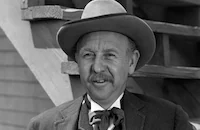
Charles Arnt
Paul Burns
Milt Kibbee
Nora Cecil
Dudley Dickerson
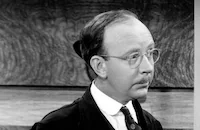
Hobart Cavanaugh
Jimmy Carpenter
Billy Lord
Bob Alden
Billy Newell
Jessie Arnold
Sam Flint
Ferris Taylor
Isabel Withers
Charles Marsh
Fred Howard
Virginia Brissac
Crew
Fay Babcock
Lodge Cunningham
Milton Feldman
Mel Ferrer
Stephen Goossón
F. Hugh Herbert
Werner R. Heymann
Thelma Hoover
Juanita Lopez
Jean Louis
Russell Malmgren
Otto Meyer
William Mull
Van Nest Polglase
Stanley Russell
Victor Scheurich
M. W. Stoloff
Virginia Van Upp
Virginia Van Upp
Joseph Walker

Videos
Movie Clip



Film Details
Technical Specs

Articles
Together Again
The original title of the film was A Woman's Privilege but was changed to Together Again to reflect that this was Dunne and Boyer's third film together. In 1939 they had appeared in two films Love Affair, (which Dunne named as her personal favorite) and When Tomorrow Comes. The Dunne/Boyer chemistry on-screen was undisputed and the script by Virginia Van Upp (who also produced) and F. Hugh Herbert was based on a story by Herbert Biberman. It didn't try to be anything other than what it was - a charming but minor entertainment.
Dunne plays a small-town mayor who has inherited the office from her late husband. When a statue of her husband is accidentally beheaded, her father-in-law, played by the always delightful Charles Coburn, tells her it is a sign from his dead son that she needs to remarry. Dunne travels to New York to meet with sculptor Boyer to make a new statue and the two fall in love, but not before complications reminiscent of a Fred Astaire-Ginger Rogers comedy.
Co-starring with Dunne, Boyer, and Coburn were Mona Freeman as Dunne's stepdaughter and Jerome Courtland as Freeman's boyfriend. Also appearing in uncredited roles were Shelley Winters, Adele Jergens, Nina Mae McKinney, and former Little Rascals star Carl 'Alfalfa' Switzer as an elevator boy. Principal shooting took place on the Columbia lot with some exterior scenes filmed in Connecticut.
Released in the United States just in time for Christmas on December 22, 1944, Together Again received excellent reviews in the press, including The New York Times which called it "a buoyant, featherweight entertainment that is eminently suited to its principals' talents." This was Mona Freeman's fourth film and Jerome Courtland's first. The New York Times singled both out for praise, saying "There are two youngsters in the cast, comparative newcomers, who practically steal the picture, or a couple of scenes at any rate. They are Mona Freeman, playing the mayor's teen-aged daughter, and Jerome Courtland, her high-school sweetheart. In an artfully mixed up romantic situation, wherein the daughter thinks Charles Boyer is in love with her rather than with her mother, Miss Freeman easily walks away with all the honors. And in another instance, when Miss Dunne makes a play for her daughter's suitor and that flustered youth gets up enough courage to kiss her, Mr. Courtland has the audience rolling in the aisle. A gangling, shuffling youth who drawls out his lines, this Courtland fellow undoubtedly will go places in a hurry." (While Courtland's acting career continued into the 1990's, he later made his mark as a director of television programs such as Fantasy Island, The Partridge Family, The Love Boat, Dynasty, The Colby's, Hotel and Matt Houston.)
Irene Dunne would reprise her role of Anne Crandall on The Lux Radio Theater on December 9, 1946 opposite Walter Pidgeon.
Producer: Virginia Van Upp
Director: Charles Vidor
Screenplay: F. Hugh Herbert, Virginia Van Upp, based on a story by Herbert J. Biberman
Cinematography: Joseph Walker
Art Direction: Stephen Goosson, Van Nest Polglase
Music: Werner R. Heymann
Film Editing: Otto Meyer
Cast: Irene Dunne (Anne Crandall), Charles Boyer (George Corday), Charles Coburn (Jonathan Crandall, Sr.), Mona Freeman (Diana Crandall), Jerome Courtland (Gilbert Parker), Elizabeth Patterson (Jessie), Charles Dingle (Morton Buchanan).
BW-93m.
by Lorraine LoBianco
SOURCES:
The New York Times November 24, 1944
The AFI Catalog
The Internet Movie Database

Together Again
Quotes
Trivia
Notes
The working title of this film was A Woman's Privilege. Although a Hollywood Reporter production chart places Bill Murphy in the cast, his appearance in the released film has not been confirmed. According to an unidentified contemporary source contained in the production files for this film in the AMPAS Library, the image of Anne's deceased husband as pictured in a photograph and painting was that of actor Frank Mayo. A news item in New York Times adds that background scenes were filmed in Connecticut. This picture marked Jerome Courtland's screen debut. Irene Dunne and Charles Boyer had previously starred together in the 1939 RKO film Love Affair and the 1939 Universal film When Tomorrow Comes (see AFI Catalog of Feature Films, 1931-40; F3.2586 and F3.5052). Irene Dunne reprised her role in a December 9, 1946 Lux Radio Theatre broadcast, co-starring Walter Pidgeon. A second Lux version, broadcast May 10, 1955, starred Maureen O'Hara and Carleton Young.














